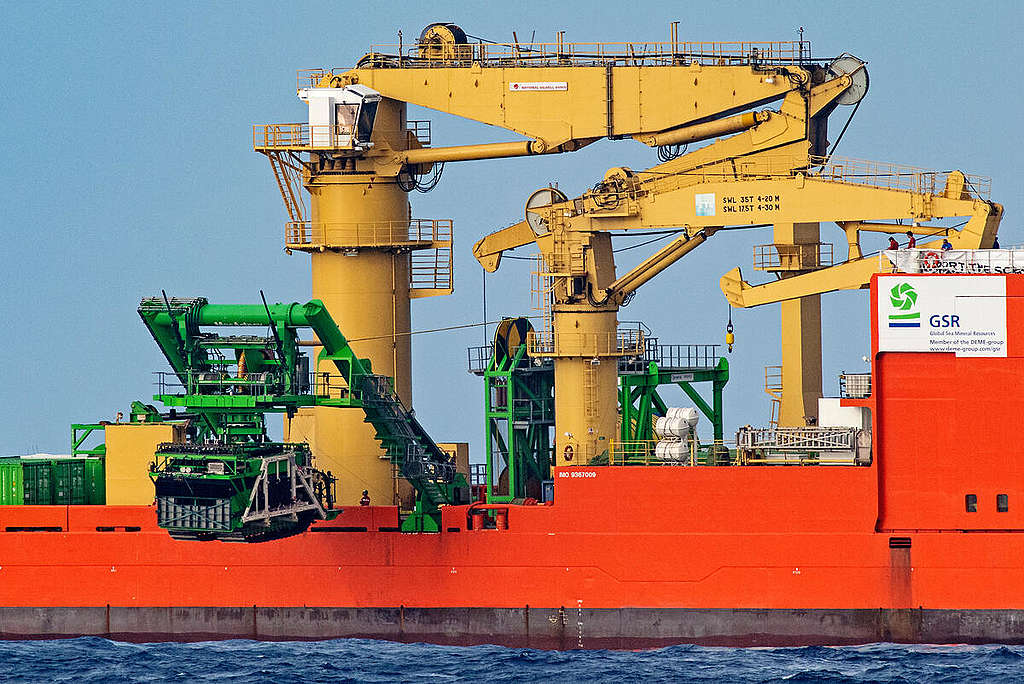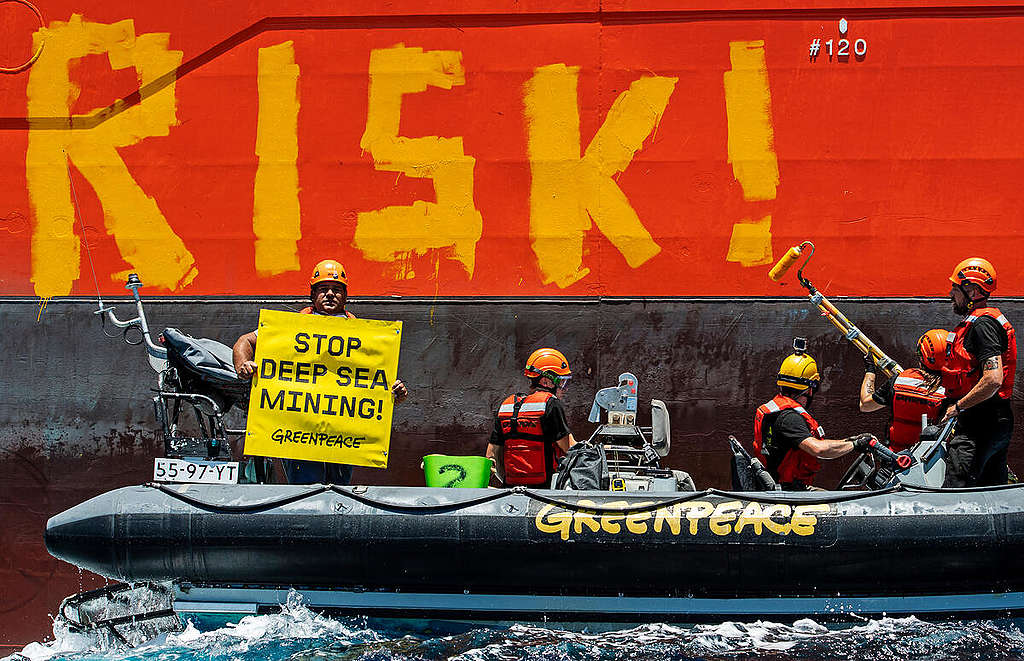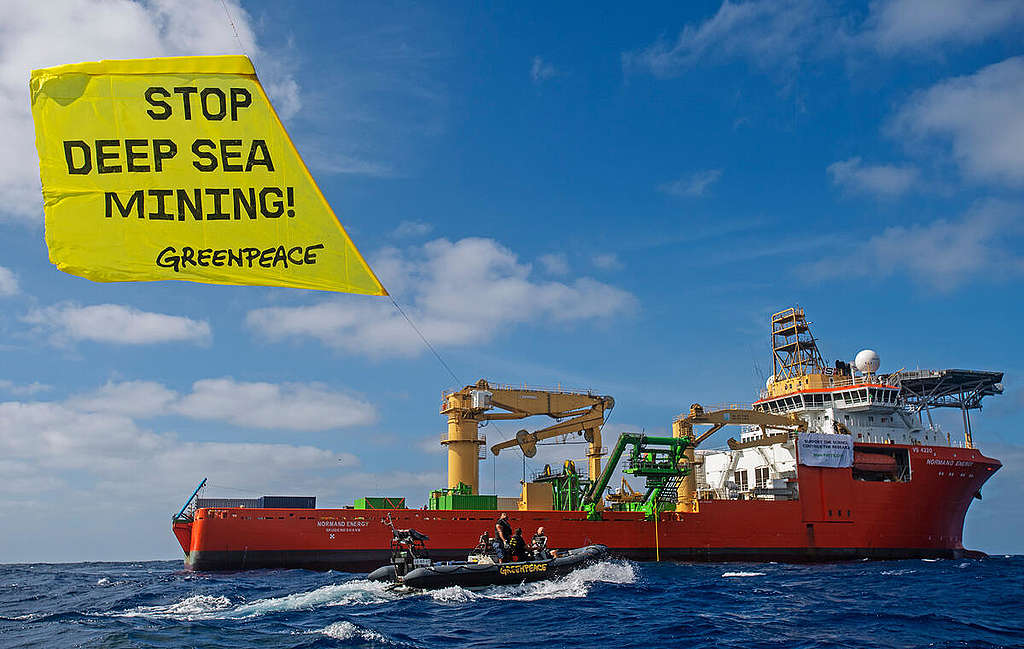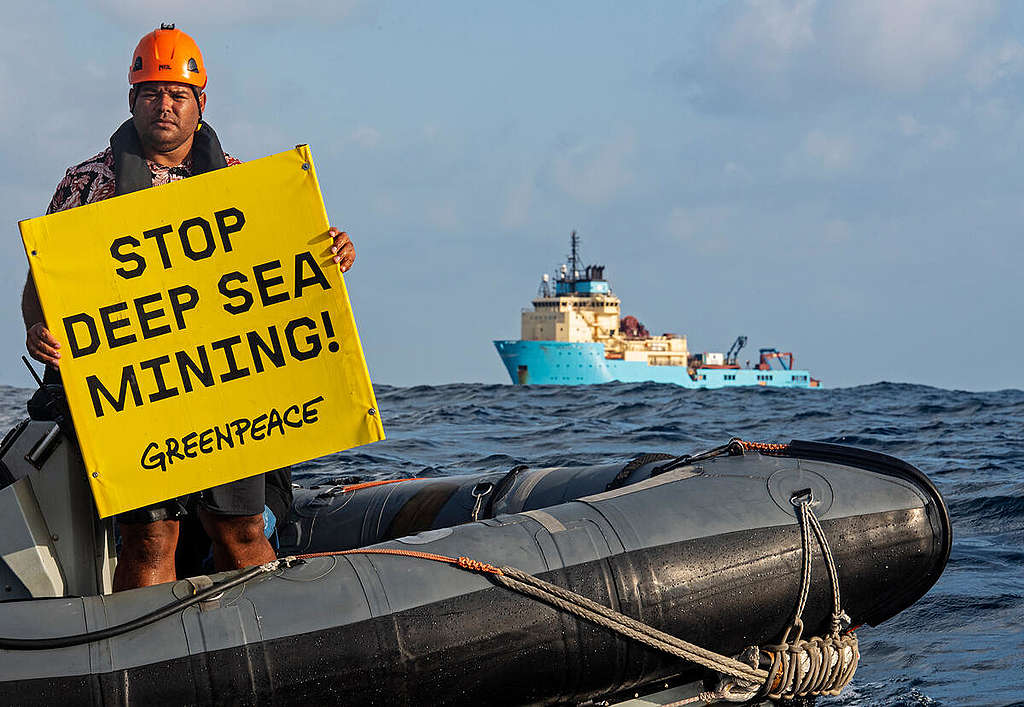This blog is a part of an ongoing series, “LIVE from the Pacific”.
In March 2021, the Greenpeace ship Rainbow Warrior set sail to a place called the Clarion Clipperton Zone in the Pacific Ocean to stop an emerging ocean threat – deep sea mining – before it begins. I joined the ship as a digital campaigner – to bear witness and expose a destructive industry in the making, and share it on digital channels to help bring the story to people worldwide.
The risky business of deep sea mining aims to extract minerals from polymetallic nodules from several thousand metres below sea level. If allowed to go ahead, this would cause huge damage to the great wildlife of the deep sea and threaten the livelihoods of the Pacific Islanders who depend upon the ocean for survival. What’s more, the deep sea is an important “carbon sink” (a place where carbon is stored), and the disturbance of it could exacerbate climate change.
Leading deep sea mining companies including The Metals Company – formerly known as DeepGreen – from Canada and the US, and Global Sea Mineral Resources (GSR) from Belgium are now doing tests to prepare for deep sea mining in the Clarion Clipperton Zone in the Pacific. GSR has already sent its prototype mining robot down to the sea floor for functional tests and impact trials.

The Metals Company and GSR both talk up their green credentials. They claim that we need deep sea mining for a sustainable future, to supply the batteries needed to build our next new phones. However, tech giants including Google and car companies including BMW have already publicly announced that they are rejecting metals sourced from deep sea mining.
What’s more, both companies are using the name of science to prepare for the exploitative, environmentally destructive activities. This is one of the most important reasons why the Rainbow Warrior is now out here in this remote area of the ocean: to expose what is actually happening. By bearing witness, we want to show the world what’s really happening and not take the companies’ PR at face value.
It’s not just Greenpeace that thinks this is a risky industry – scientists around the world agree the deep sea mining industry will cause huge impacts on the environment. So in the Pacific we took action and painted “RISK” on GSR’s vessel, to warn the industry and the public of the environmental and operational risks involved in putting a 25-tonne machine 4,500 meters below sea level.

Believe me, it brings me no pleasure to tell you that just a few days later that message was shown to be absolutely right.
GSR’s mining robot catastrophe
At the end of April, GSR’s 25-tonne prototype machine got disconnected from the control cable and stuck on the deep seabed. As a result, GSR lost control over their mining gear for several days. It was a gut-churning moment that showed exactly why people around the world are worried about this industry getting started. And it showed that for all the deep sea mining industry’s talk of sustainability and safety – operating thousands of meters below on the seafloor is just as difficult and dangerous as it sounds. It just isn’t worth the risk.
Though the machine was eventually retrieved, we were the first to report on this epic failure of their impact test. All of this reinforced to me just how important it is that organisations like Greenpeace are out there as a truly independent watchdog – completely free from funding by industry or government – to bear witness on the front lines of environmental destruction.

But it’s not just this mechanical failure that we were able to expose. Prior to the accident we observed a huge muddy cloud of sediment during one recovery of the mining machine, suggesting that the machine had caused disturbance on the seafloor.
Had we not been there, there’s a big chance that GSR wouldn’t publicly tell the stories of the failed testing or the murky waters its machine caused on the surface of the sea. Operating out of sight in the distant ocean, it would be too easy to hide the real dangers from the public eye.
Next up
Greenpeace activist Victor Pickering is from Fiji. As Pacific islanders, Fijians depend on the ocean for living. He is bearing witness to yet another threat – deep sea mining that will impact the livelihood of his people on top of sea level rise, plastic pollution and industrially depleted fish resources. He is standing on the frontline to peacefully protest against this new industry’s plans for exploitation.
Victor says: “We are people of the sea, and we cannot stand by as big mining companies walk in and take what they like – leaving the Pacific and its people to deal with the consequences.”

Greenpeace stands in solidarity with those activists from Pacific Islands, and millions around the world, opposing the emerging threat of deep sea mining before it begins. 3.5 million of us are demanding that governments agree to a strong Global Ocean Treaty this summer at the UN that ultimately enables the creation of a network of ocean sanctuaries, free from harmful human activities, around the world. Join us in our movement to protect the oceans.
about the author
Kelly Huang
Yu-Chi (Kelly) Huang, Onboard Digital Campaigner for the Global Protect the Oceans project. Kelly is currently onboard the Greenpeace flagship Rainbow Warrior in the Pacific, bearing ... Read More

No comments:
Post a Comment
Note: Only a member of this blog may post a comment.